Hall of Justice
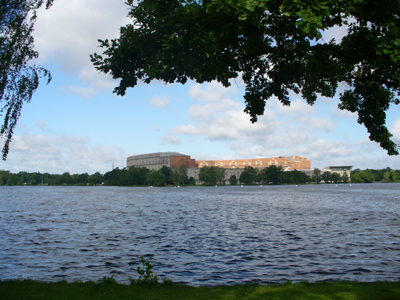
Our first stop in Nürnberg was for a view of the Congress Hall which was built by the Nazis and used for one week a year for their celebration.
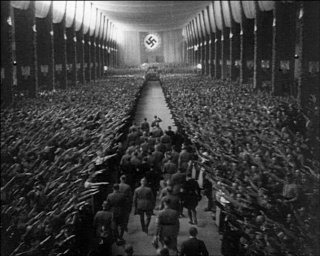
A photo of Hitler leading a delegation of high-ranking Nazis into the Congress Hall.
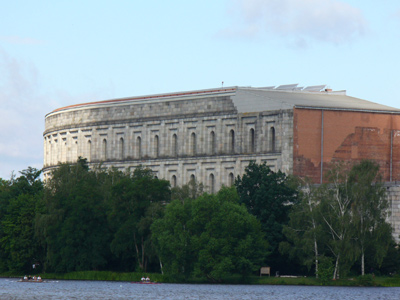
Hitler had intended that it be made completely of granite to match the glory of the Roman Colosseum, but there was not enough granite for this, so much of it was brick and concrete.

It was a short walk to the rally grounds where Hitler had spoken to the crowds.

Although the construction was intended to last a long time to commemorate the Third Reich, much of it was destroyed by the American troops and what remains is now fenced off in very poor condition.
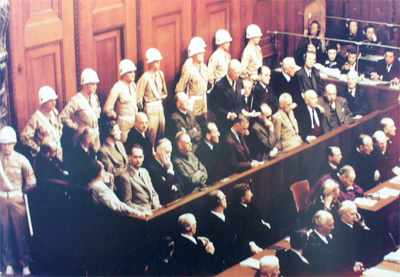
Although Hitler committed suicide, many of his subordinates were tried in Room 600 of the Hall of Justice in Nürnberg.

We were able to visit that room and hear the story of the trial.
The Old Town 2007

We visited the Old Town market square, dominated by the Gothic Frauenkirche (Church of Our Lady, 1352-61.)
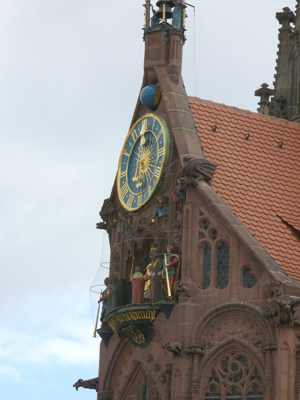
Above the porch with its rich sculptural decoration is the "Männleinlaufen," an old clock with mechanical figures (the seven Electors pacing round the Emperor Charles IV; performances daily at noon).
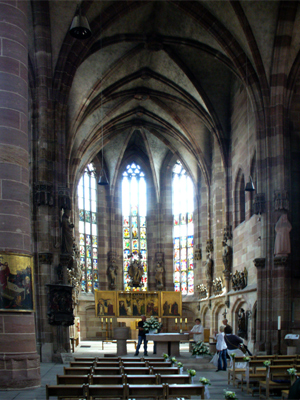
The interior of the church, with people preparing for a wedding.
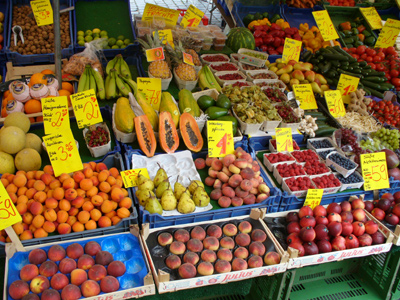
A stall in the market.
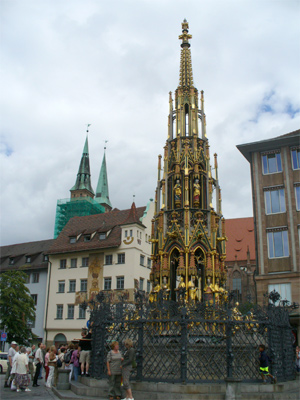
Also in the marketplace is the fourteenth century golden fountain. It is a brilliantly gilded filigree monument of the Gothic period, richly decorated with historical and allegorical figures. There is a gold ring that if turned three times will ensure that your wish will come true.
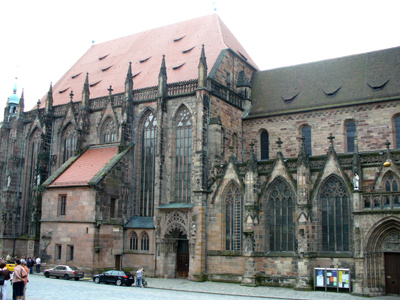
The Protestant Sebaldskirche is near the square and is a Romanesque church, begun in 1230-1240, modified and enlarged in the late Gothic period.
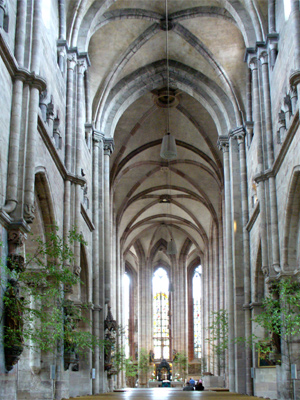
The interior of the Sebaldskirche.
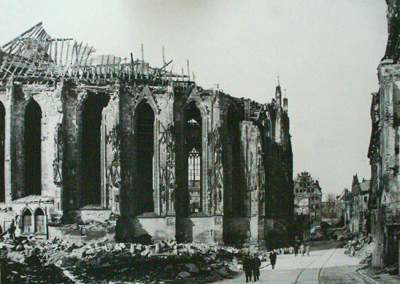
The towers and the major part of the east chancel were destroyed in WWII and have been rebuilt.
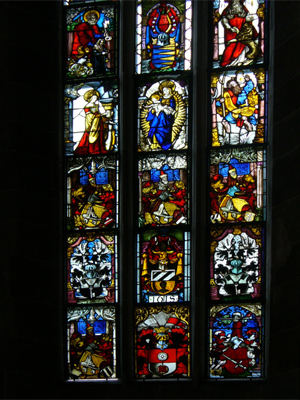
The stained glass is from the 14th and 15th century.
Old Town 2007
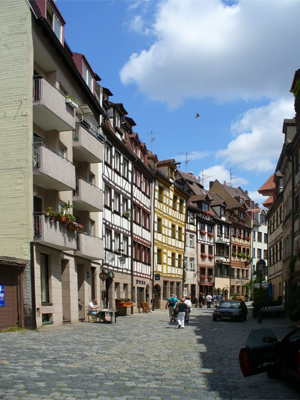
Although most of the Old Town was damaged in the bombing of WWII, these old buildings on the Weißgerbergasse were not. In medieval times these were the homes and shops of artisans.
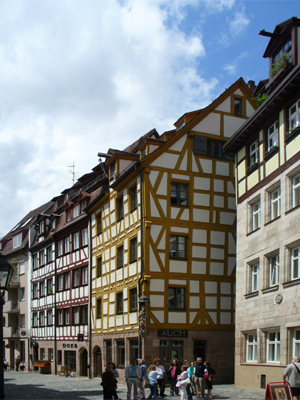
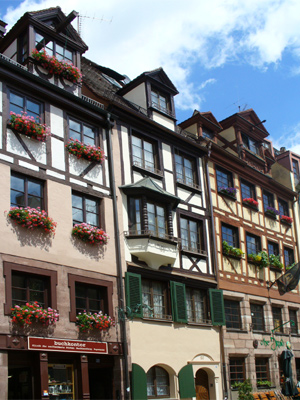
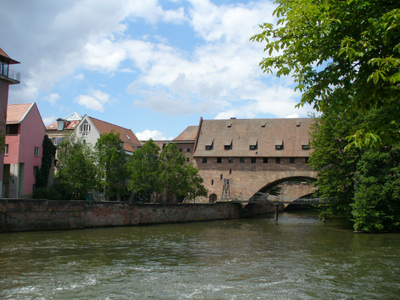
This is another scenic part of the Old Town area.
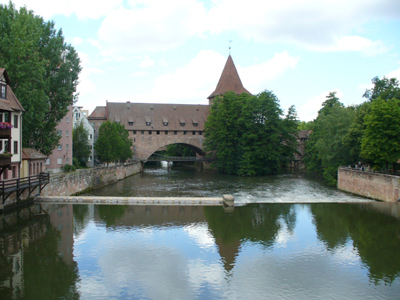
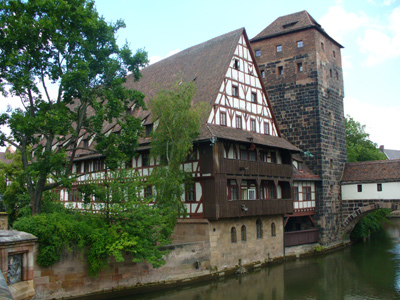
The Wine Store (Weinstadel) is one of Nuremberg's most beautiful buildings. Two half-timbered stories rise above the ground floor fashioned from sandstone ashlars. The front towards the river Pegnitz boasts wooden galleries with metal gargoyles, and there is a bridge with a covered walkway towards the Hangman's Bridge. During the 13th century, this was the course of the "last-but-one city fortification", which connected the two parts of the town by bridging the river Pegnitz.
Originally the building, erected in 1446/48, was an infirmary housing people suffering from leprosy. They were allowed to live within the city for three days during Holy Week and – in addition to receiving food and clothing – were also examined by a doctor.
From about 1571, the building served as a wine store, later on as a work house and spinning house and as accommodation for poor families.
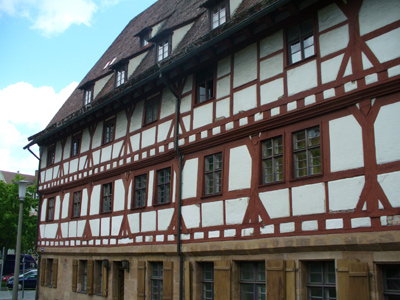
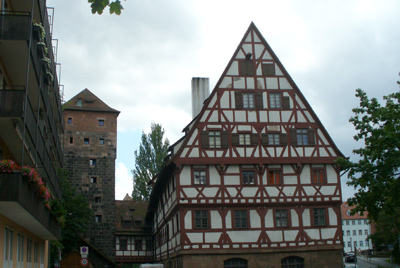
Nuremberg 2017
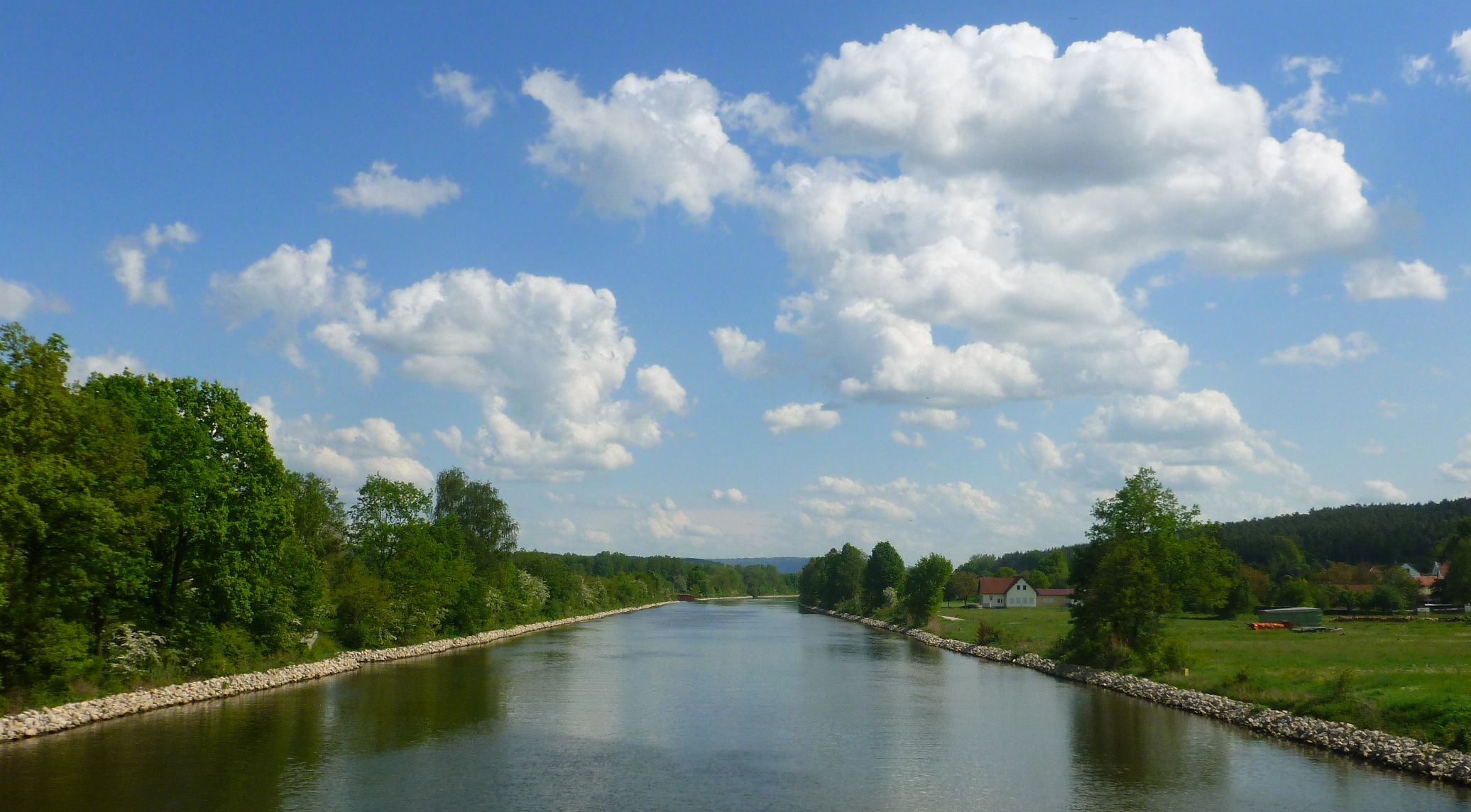
It was a beautiful day as we sailed on the Main-Danumbe Canal from Bamberg to Nuremberg.
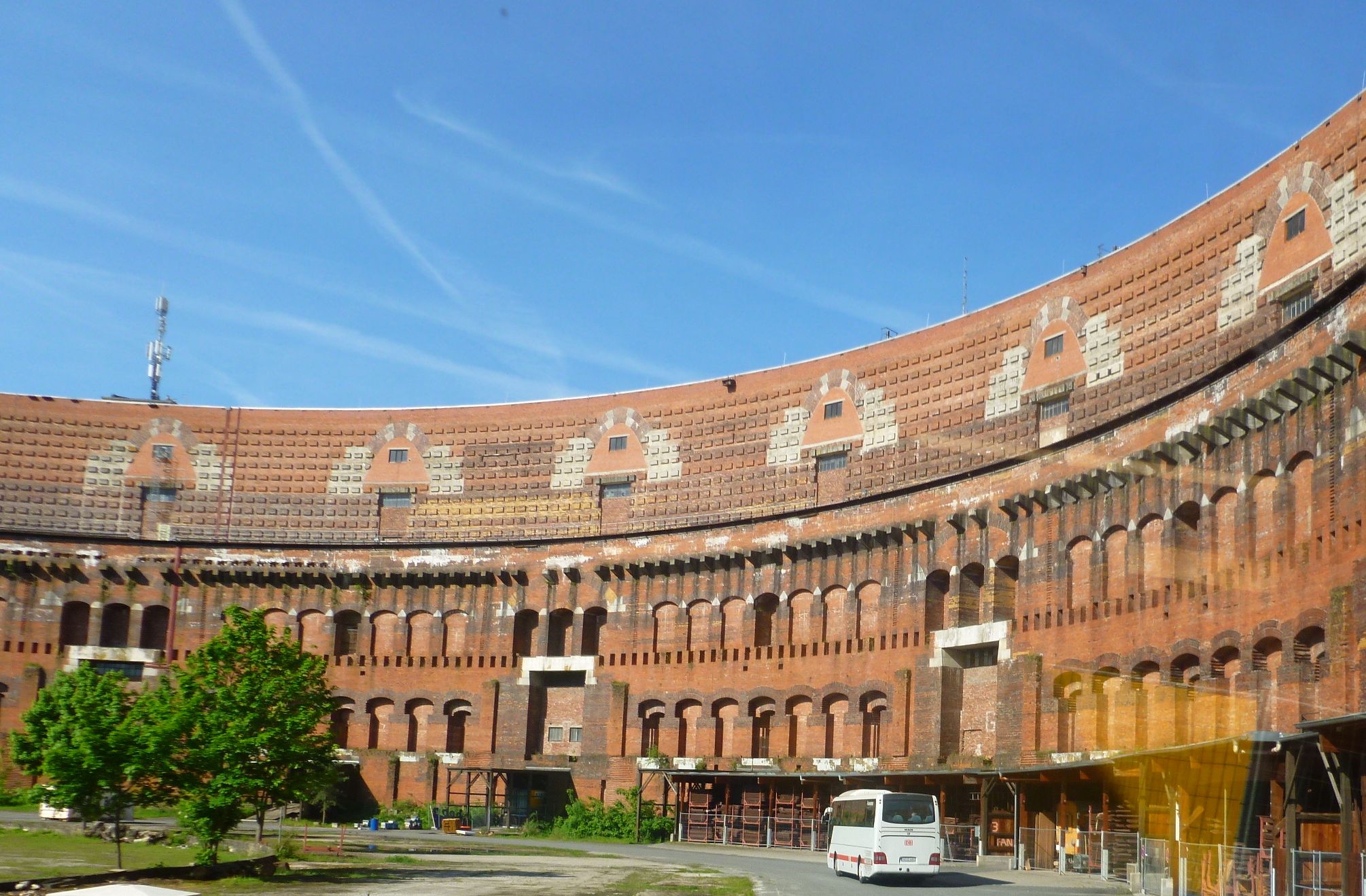 Our bus driver took us inside the remains of the Congress Hall. Our bus driver took us inside the remains of the Congress Hall.
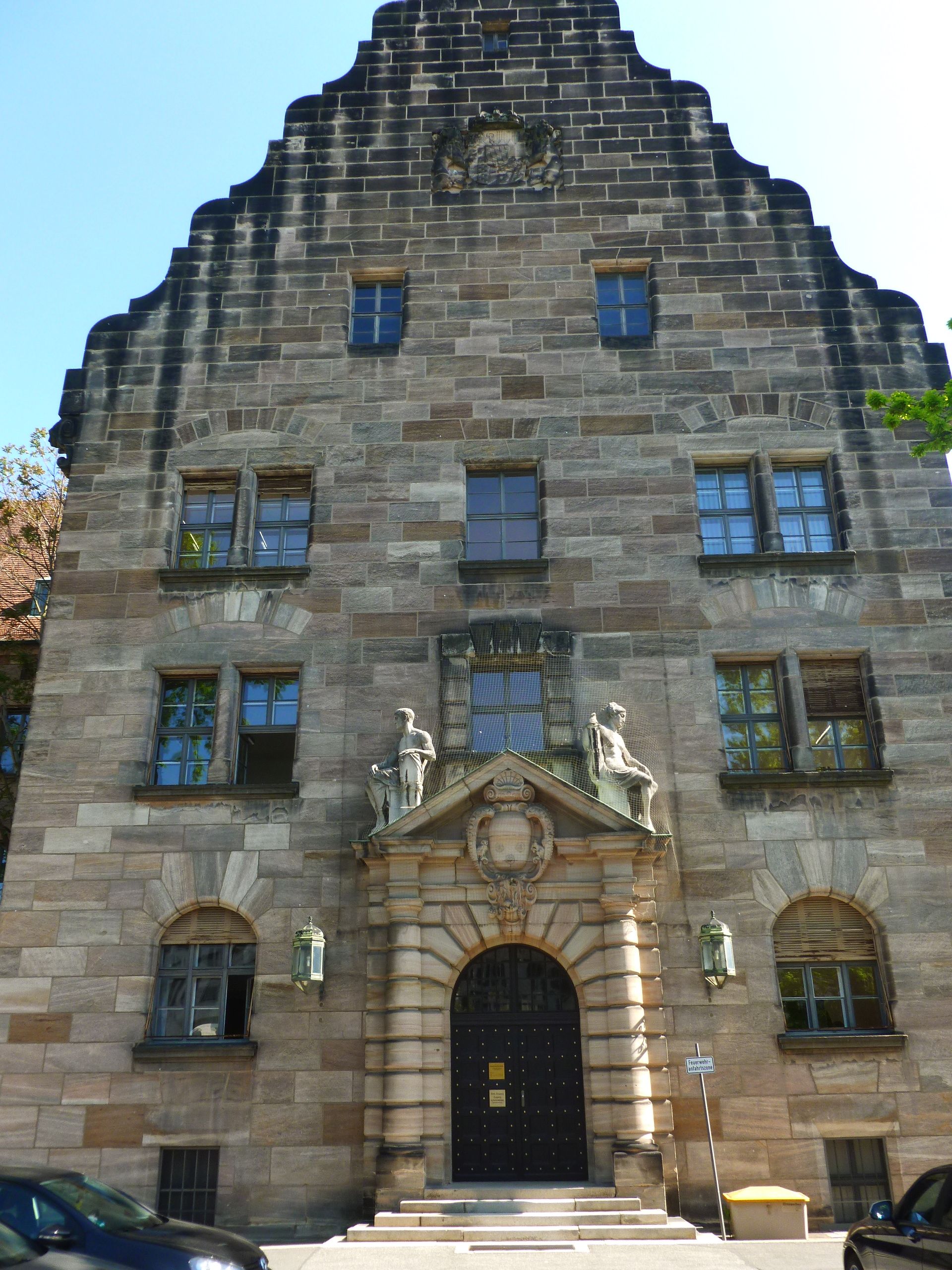 We stopped in front of the Hall of Justice for some photos. For details of the interior see the report of the 2007 cruise above. We stopped in front of the Hall of Justice for some photos. For details of the interior see the report of the 2007 cruise above.
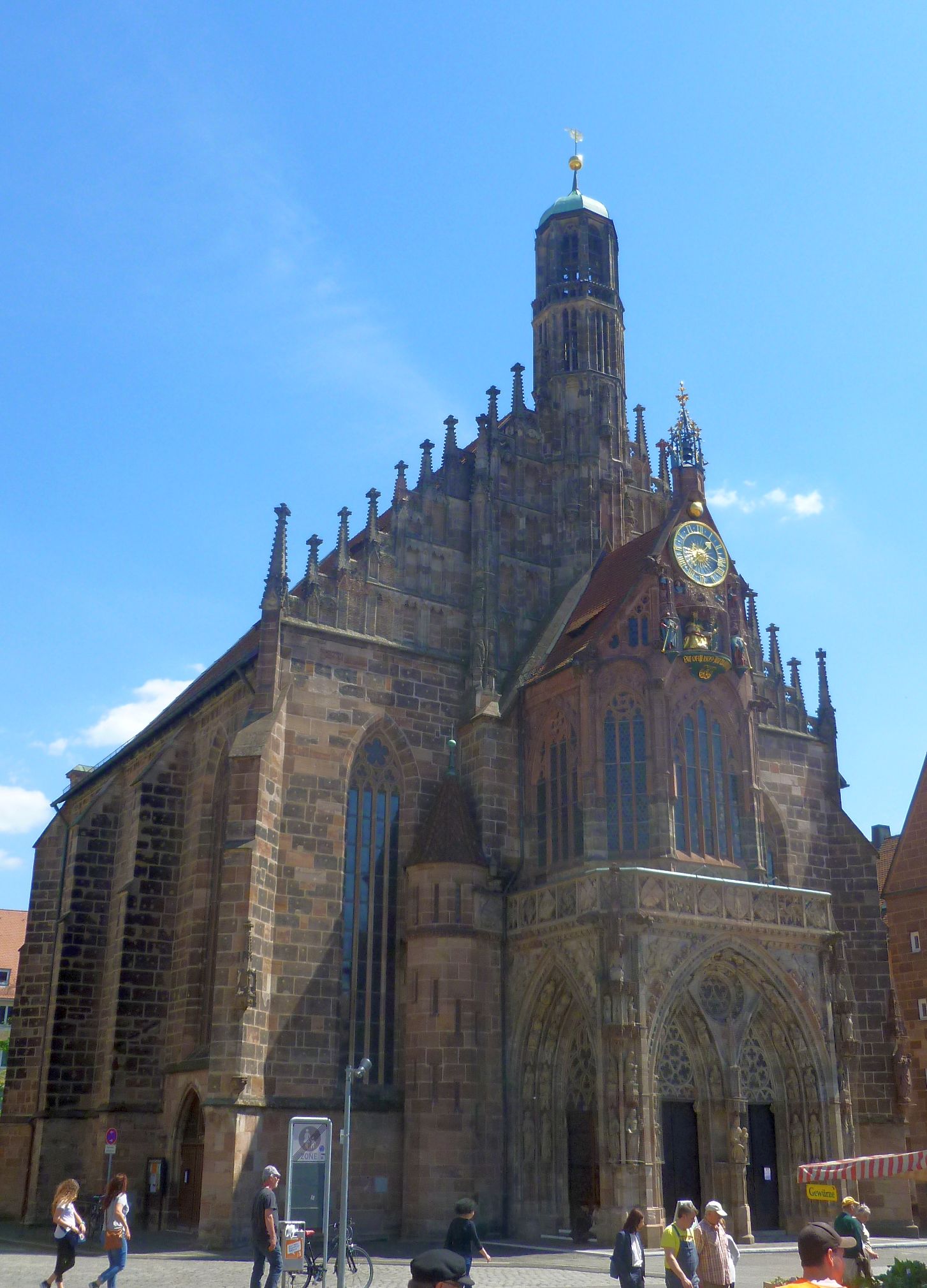
In the Old Town market square we were able to see the "Männleinlaufen," an old clock with mechanical figures (the seven Electors pacing round the Emperor Charles IV) in the Gothic Frauenkirche (Church of Our Lady, 1352-61.)

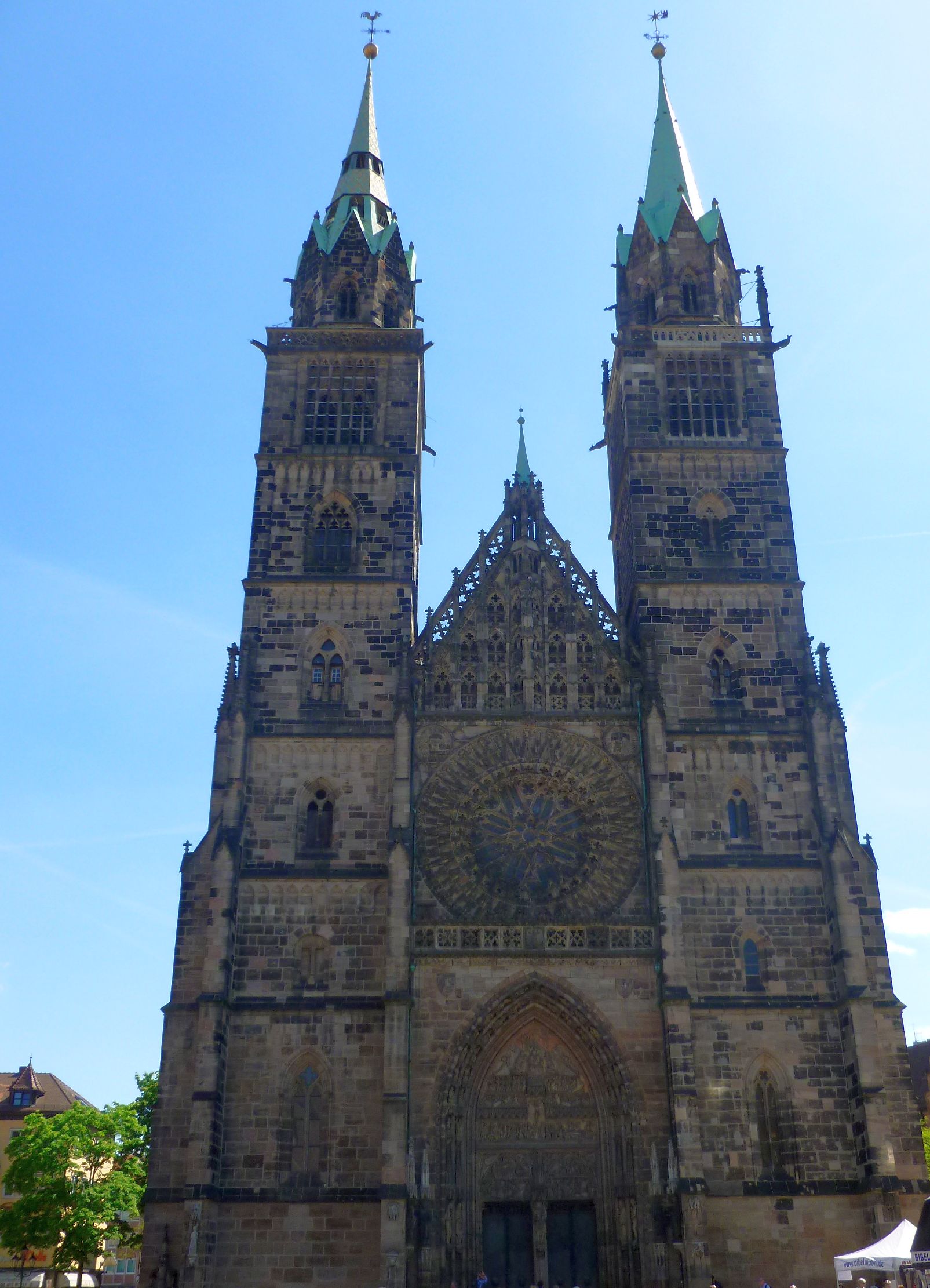 We had not seen the St. Lorenz Church on previous visits so we went there this time. The construction of St Lorenz began in 1260 on the foundation walls of a Roman basilica and was completed in 1360.
It is very similar to its sister church St Sebald, on which it was modelled. We had not seen the St. Lorenz Church on previous visits so we went there this time. The construction of St Lorenz began in 1260 on the foundation walls of a Roman basilica and was completed in 1360.
It is very similar to its sister church St Sebald, on which it was modelled.
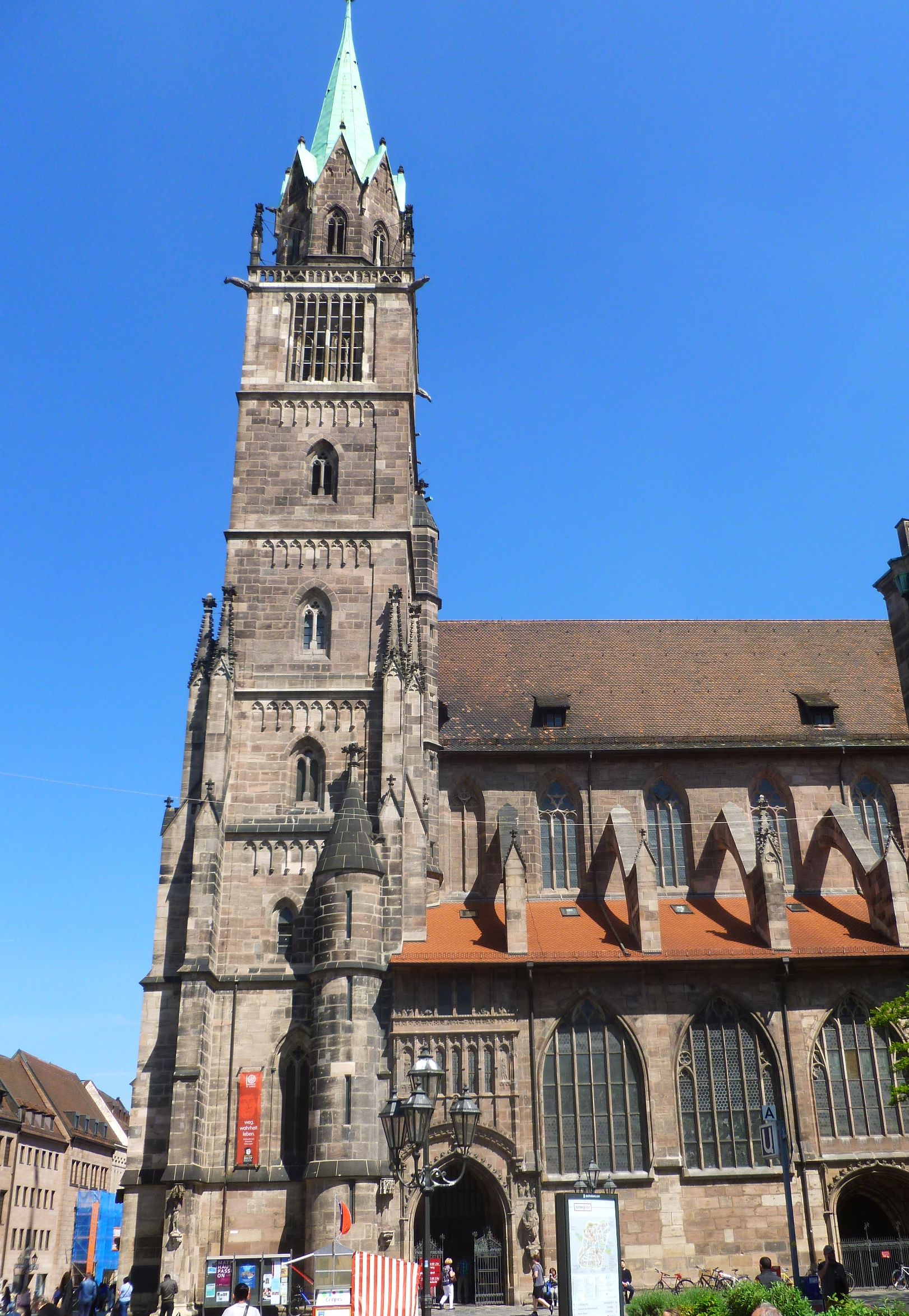 A side view shows the flying buttresses. A side view shows the flying buttresses.
 An interior view. An interior view.
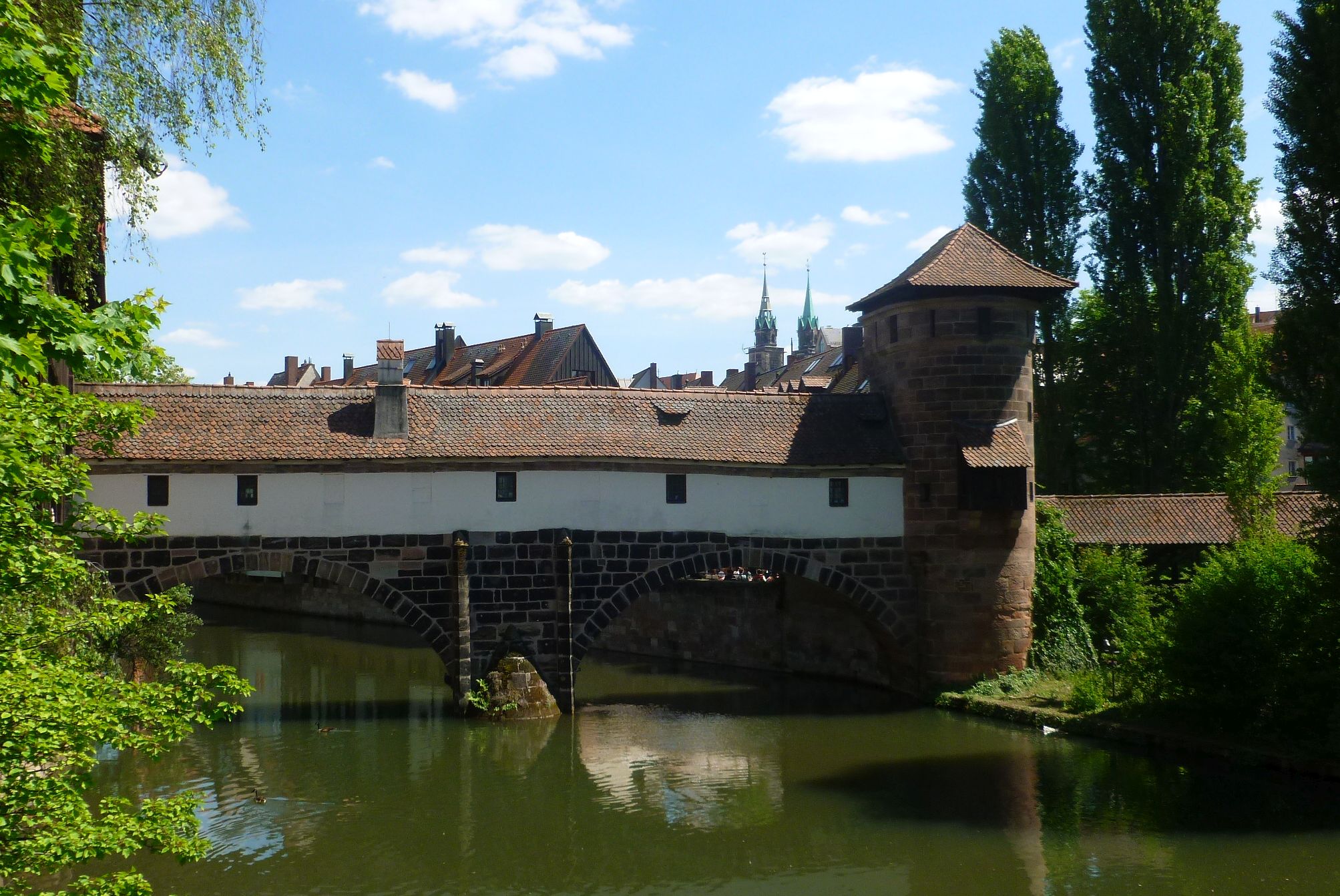 For some different views we walked in an area of Old Town we had visited in 2007. For some different views we walked in an area of Old Town we had visited in 2007.
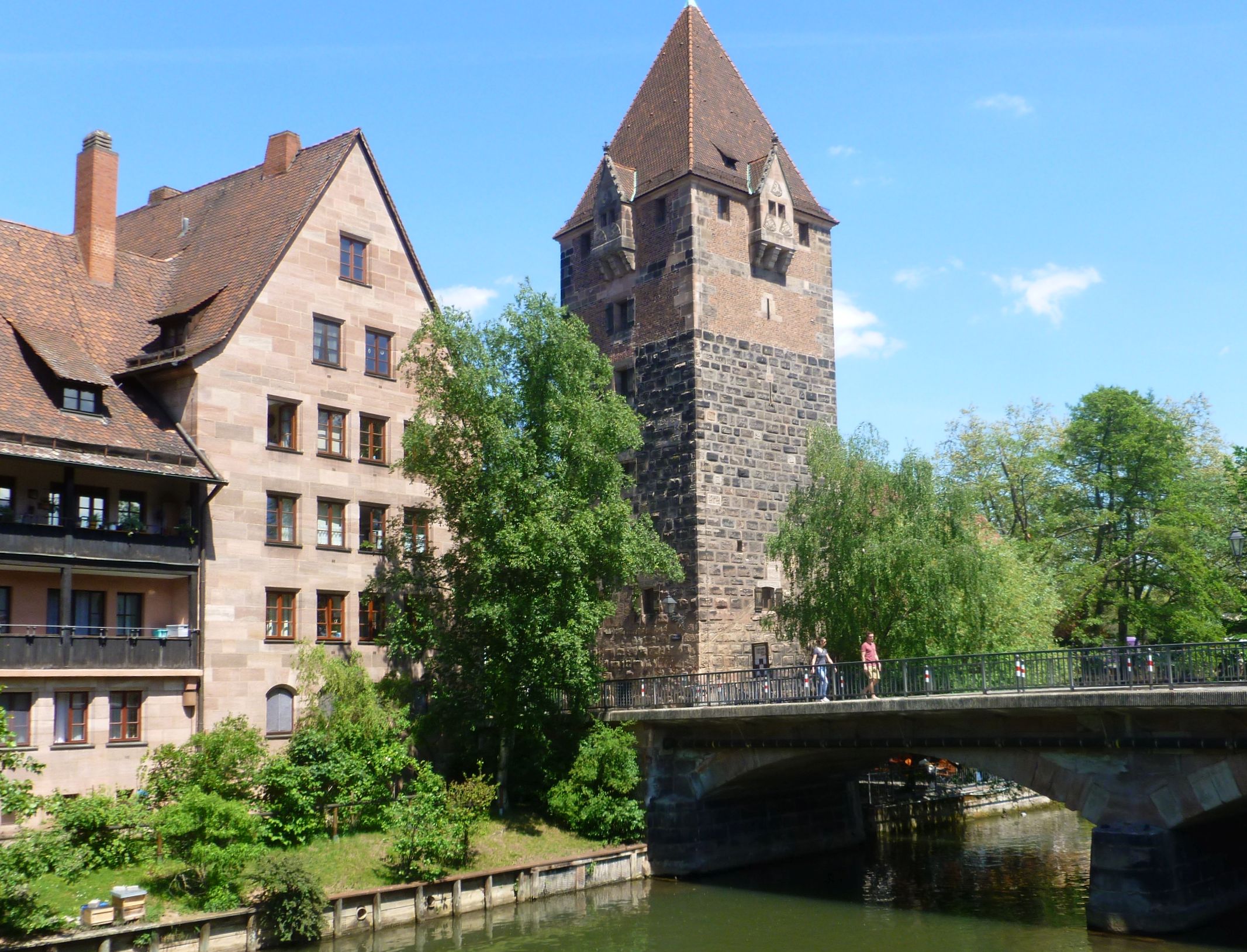
 On our way out of town we saw some of old towers and city walls of Nuremberg. On our way out of town we saw some of old towers and city walls of Nuremberg.
|

